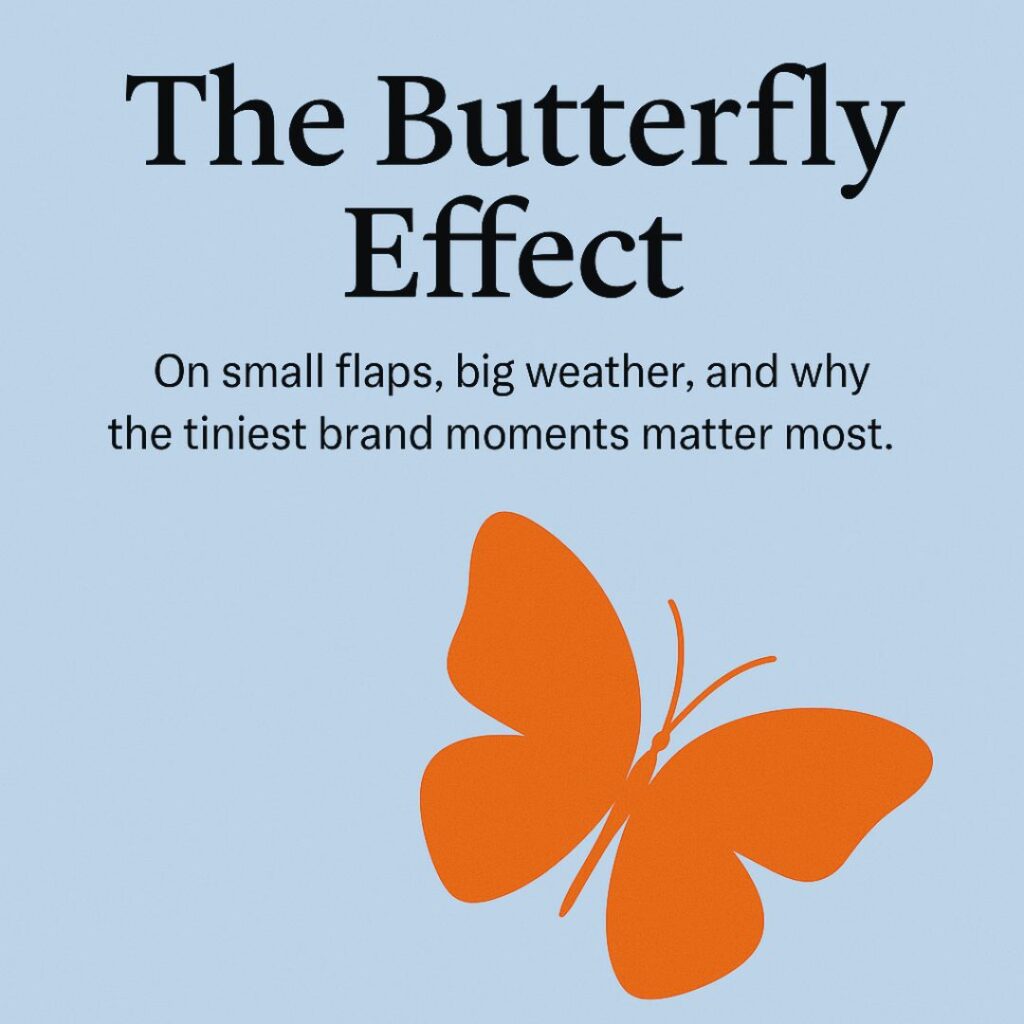Reflexive Branding: A Taxonomy of Becoming

In language, reflexive verbs turn the subject back onto itself. To examine oneself. To lose oneself. To renew oneself. These are essentially recursive acts — feedback loops of change, awareness, and becoming. In branding, where identity is never static and coherence must emerge through complexity, the reflexive voice offers a window into a world that begins with grammatical curiosity, and spins out into the universe from there, offering a metaphor for how brands evolve, relate, and express.
If you’ve been reading our recent posts, you know that at Otherwise, we think of brands as organisms that are in constant motion, shaped by context and capable of self-reference. In that light, reflexive verbs become useful tools that speak to the ways in which a brand can actively participate in its own unfolding.
From Fixed Identity to Recursive Practice
Traditional branding typically strives for consistency, cohesion, and recognizability. These aims aren’t wrong — but when pursued rigidly, they can reduce a brand to a static artifact. A logo, a palette, a tagline. Predictable. Packaged. Done.
But the reality of brand experience — in culture, in digital environments, in human relationships — is anything but static. It’s improvisational, relational, in flux. In this alternative world, a brand must be able to adapt itself, question itself, express itself in new and unpredictable ways. Reflexivity, then, becomes a core capacity — not a failure of definition, but a richer understanding of identity as process.
A Taxonomy of Reflexive Becoming
To bring this to life, we’ve begun developing a conceptual taxonomy — a framework of reflexive verbs that maps onto dimensions of branding practice. Each represents a mode of action in which the brand is both subject and object — simultaneously doing the work and being changed by it.
- To orient oneself. Brands must continually re-situate themselves in changing cultural, technological, and political landscapes. This isn’t about pivoting on command, but about developing an internal compass that responds to external change — a wayfinding system that evolves over time.
- To renew oneself. Rather than rebrands driven by trend fatigue, we advocate for rhythmic renewal — composting what no longer serves, making space for the emergent, honoring seasonality over disruption. Using renewal to metabolize history.
- To differentiate oneself. Not in the reductive sense of “unique selling proposition,” but through deeper discernment. What is the shape of this brand’s voice, its worldview, its aesthetic logic? What can it say that no one else can?
- To express oneself. Expression embodies the brand. It includes how a brand speaks, how it holds space, how it feels to encounter. Brands that express themselves may not be the loudest, but they are the most alive.
- To examine oneself. Reflexive brands are self-aware. They’re capable of critique. They know how to ask: Why are we doing this? Who is it for? What impact are we having? This internal dialogue is what turns slogans into systems.
- To position oneself. When thinking reflexively, positioning moves beyond market placement to illuminate ethical and strategic stances. Where do we stand — politically, culturally, environmentally? Whose voices do we uplift? Whose futures do we align with?
The beauty of these verbs is that they don’t operate in isolation. They form a living cycle — a choreography of brand aliveness, in which self-reference becomes a method of both meaning and motion.
Branding as a Living Language
Just as reflexive verbs complicate the relationship between subject and action, reflexive branding complicates the relationship between identity and performance. A brand is not only what it says or does — it’s how it registers itself in those acts. How it listens, questions, and grows through interaction. In this view, branding becomes a function of fluency, encouraging us to genuinely inhabit questions rather than focus on arriving at answers.
A Brand Becoming
Reflexivity invites us into a more generous, generative relationship with branding — one where identity is oriented around unfolding. In this framework, a brand learns to see itself seeing, to speak with awareness, and to remain in a dance with the world around it. When we embrace branding as a reflexive act — iterative, relational, and alive — we build resonance. We cultivate brands that grow because of complexity, not in spite of it, and in the process, become a point of view in motion.








